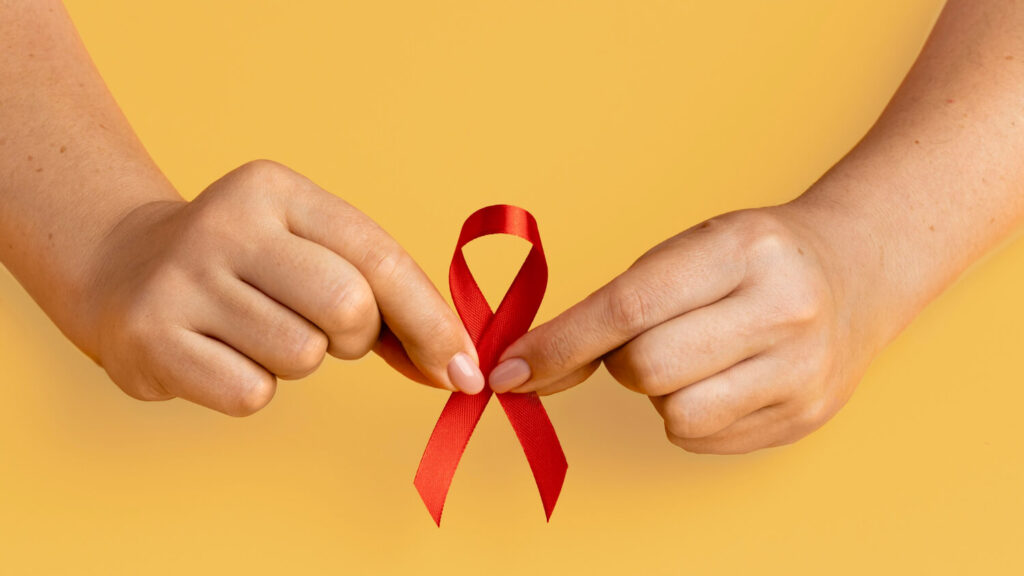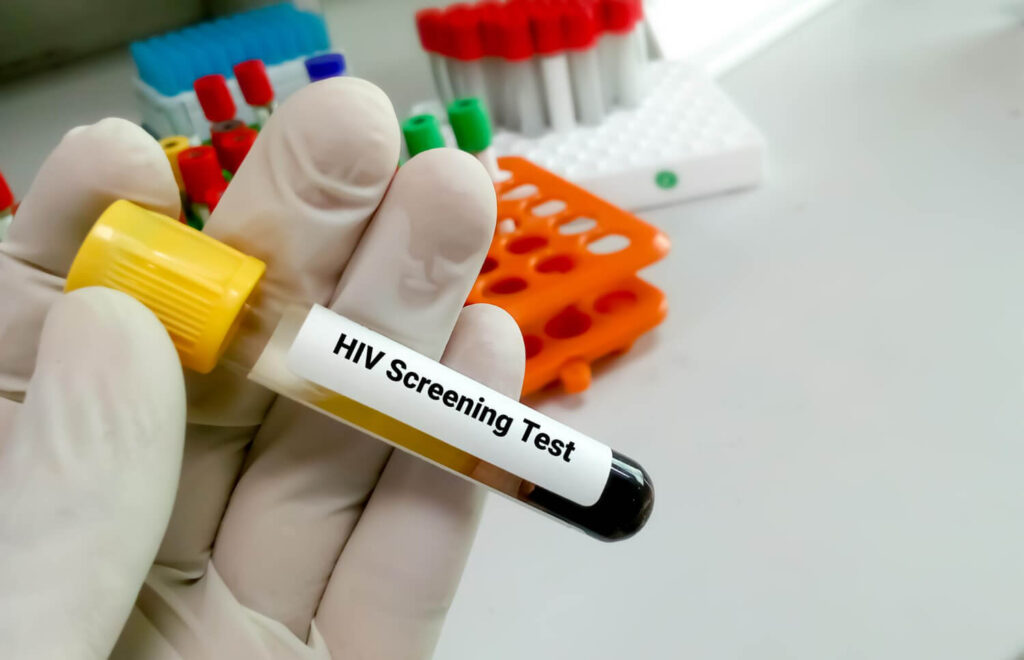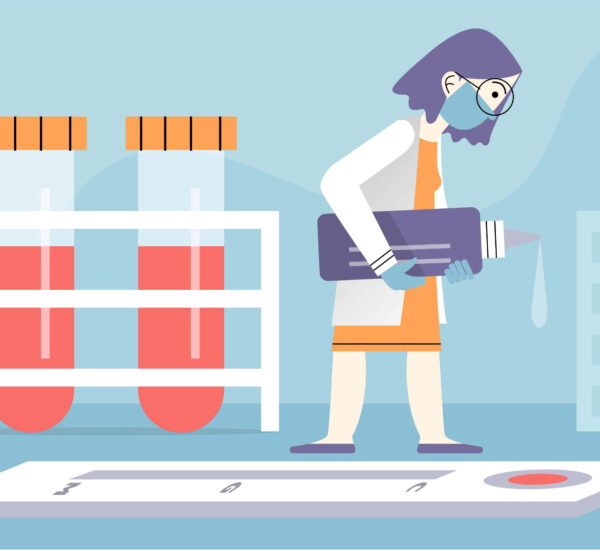In today’s world, it’s vital to prioritize one’s health and well-being. One crucial aspect of healthcare is regular testing, especially when it comes to conditions like HIV. Currently, there are several HIV test types that people have access to. Unfortunately, such a wide range of options can be confusing, especially without knowing the best and how to use them.
Understanding the different HIV test types available is an important aspect that people must understand. At the same time, knowing its role in the detection of HIV can be an effective step towards disease control. Thus, protecting the public from this condition. Let’s uncover more about these HIV test types below!
Understanding HIV and Its Impact

HIV, the human immunodeficiency virus, is an infectious disease that attacks the immune system, specifically the CD4 cells, also known as T cells. This virus is transmitted via body fluids like blood, semen, vaginal fluids, etc. As HIV progresses, it can have a severe impact on the body’s ability to fight off infections and diseases. However, with early detection and appropriate treatment, people living with HIV can lead long and healthy lives.
It’s a must to recognize that HIV is a complex virus that has different strains and subtypes. The most common strains are HIV-1 and HIV-2, with HIV-1 being the most widespread globally. Understanding these distinctions is crucial for healthcare providers in determining the most effective treatment options for individuals living with HIV.
Rapid Test vs Laboratory Test
There are two main categories for HIV tests: rapid tests and laboratory tests. Rapid tests provide results in minutes using a simple blood or saliva sample, making them convenient for quick screenings. On the other hand, laboratory tests require samples to be sent to a lab for analysis, offering more accurate results but with longer waiting times.
Both types of tests play a vital role in HIV detection and monitoring. Rapid tests are often used in community settings or outreach programs to reach more people efficiently. Meanwhile, laboratory tests are utilized for confirmatory purposes and monitoring of the virus progression.
Understanding the differences between HIV test types is crucial for ensuring timely detection and appropriate management of the virus.
An Overview of HIV Test Types

Under the two main categories, people can utilize three primary HIV test types. Discover and explore more about how these tests can help with the HIV screening process!
Rapid Antibody Screening Tests
One of the most common HIV test types is a rapid antibody screening test. This test kit works by detecting antibodies, and can provide HIV test results within minutes. It can also be performed in various locations. Thus, allowing patients to determine their HIV status, and seek early treatment promptly.
On the other hand, this type of HIV test can offer convenience due to its user-friendly nature. Using the kit components like the finger prick mechanism, people can acquire drops of blood as samples. Meanwhile, this test kit also accepts a sample of oral fluid for HIV rapid test.
Antigen/Antibody Tests
Meanwhile, one of the HIV test types that people must know is the combination test or antigen/antibody test. This type of test can detect HIV antibodies and antigens, which are viral proteins in the blood during the early stages of infection.
That’s why it can detect HIV infection sooner than antibody tests. The only difference is that the combination tests can take a few days to a week to produce results. While it can take longer, it can offer a higher level of accuracy during the early stages of infection.
Nucleic Acid Tests (NATs)
The last among the common HIV test types is NAT. Nucleic acid tests, also known as NATs or molecular tests, directly detect the genetic material of HIV. This lab test is highly sensitive and can detect the virus within days after infection. However, due to their complexity and cost, NATs are typically reserved for specific situations, such as with individuals at high risk, during the early stages of infection, or in certain medical settings.
One advantage of NATs is their ability to detect HIV early, even if there are not enough antibodies produced. This early detection is crucial for initiating timely treatment and preventing further transmission. However, it’s important to note that NATs are not commonly used as a standalone diagnostic tool due to their cost and the need for specialized laboratory equipment and expertise. They are used in combination with other tests to confirm HIV infection.
Whether it’s the convenience of rapid antibody screening tests, the early detection capability of antigen/antibody tests, or the high sensitivity of nucleic acid tests, each test type contributes to the overall goal of reducing the burden of HIV and improving the lives of those affected.
Factors to Consider When Choosing an HIV Test

Detection of HIV should be a primary goal of individuals, especially if met with possible exposure. That’s why people can try to practice routine screening, like using self-tests. Doing so can help them identify their current HIV status, and know when to seek help promptly.
When selecting among the HIV test types, there are several factors to consider before making an informed decision. Let’s discuss each of them below!
Accuracy of the Test
Accuracy is a crucial consideration when choosing an HIV test. Different HIV test types have varying levels of sensitivity and specificity. Sensitivity refers to a test’s ability to correctly identify those infected with HIV, while specificity indicates its ability to identify those not infected. It’s important to choose a test with high sensitivity and specificity to minimize the risk of false negative and false positive test results.
Time Frame for Results
Moreover, the time it takes to receive test results can vary depending on the test type. Rapid tests provide results within minutes, whereas other tests may take several days to a week. In that case, consider one’s preference and the urgency of obtaining results when choosing a test.
However, to ensure an accurate HIV test result, it is essential to consider the concept of the window period. The window period for the different HIV test types is not the same. Some may provide fewer weeks, while others can lead to a month. It’s best to acknowledge these periods to ensure accurate results.
Cost and Accessibility
Another aspect to guide people in choosing among the available HIV test types is the cost and accessibility factor. The cost and accessibility are practical considerations when selecting an HIV test. Different tests have varying costs, and it’s essential to choose an option that aligns with the budget and health insurance coverage. Additionally, consider the availability and proximity of testing facilities in the area.
Furthermore, it’s vital to consider the counseling and support services offered in conjunction with the HIV test. Some community health centers and medical centers provide pre and post-test counseling to help individuals understand the implications of the test results and provide emotional support. This additional service can be valuable for those feeling anxious or overwhelmed during testing.
Testing Method
The last factor is the testing method used in the HIV test. There are different HIV test types available, including antibody tests, antigen/antibody tests, and nucleic acid tests. These tests may utilize different samples such as a drop of blood and oral fluids. However, it is also important to note that one sample can provide a more accurate viral load test than the other.
In that case, understanding the differences between these testing methods can help individuals choose the most suitable option based on the vital matter, which is an accurate detection of HIV status. However, take note that it is still important to take a confirmatory test or a second test to check if the first test result is accurate.
What to Expect from Medical Professionals in HIV Testing
HIV testing is not a journey people must undertake alone. Medical professionals can provide guidance, support, and expertise throughout the testing process.
Here’s what people can expect from HIV healthcare professionals.
Thorough Understanding of HIV
When it comes to HIV testing, it’s essential to consult with a healthcare provider. They can offer valuable insights into the different test types, help you determine the most appropriate option based on your specific circumstances, and guide test interpretation and next steps.
Confidentiality and Ethical Considerations
Medical professionals maintain strict confidentiality when it comes to HIV testing and other sensitive health information. Knowing that privacy is protected, it can alleviate any concerns patients may have about seeking testing or discussing your results. Additionally, healthcare providers adhere to ethical guidelines to ensure respectful and non-discriminatory care for all patients.
Access to Mental Health Services
Moreover, medical professionals are trained to provide emotional support and counseling throughout the HIV testing process. They understand the anxiety and fear that can accompany getting tested for HIV and are equipped to offer reassurance and guidance every step of the way. Their compassionate approach can help individuals feel more at ease and empowered to take control of their health.
Furthermore, medical professionals also play a crucial role in linking individuals to support services in the event of an HIV diagnosis. They can connect patients with resources such as HIV treatment centers, support groups, mental health services, and community organizations that specialize in HIV care. This comprehensive approach ensures that individuals receive the holistic support they need to navigate their HIV diagnosis and manage their health effectively.
Life After an HIV Diagnosis
Upon receiving an HIV diagnosis, it’s important to seek support from healthcare providers, counselors, support groups, and loved ones to navigate this new chapter in life. Here are the possible treatment options to apply for better management of one’s HIV.
Treatment Options and Medications
There are numerous treatment options and medications available to manage HIV. Antiretroviral therapy (ART) is the standard treatment for HIV. It involves taking a combination of medications that can effectively control the virus, improve immune function, and reduce the risk of transmission. Consulting with a healthcare provider is crucial to develop a personalized treatment plan.
It’s important to note that adherence to medication regimens is key to the success of HIV treatment. Missing doses or stopping medication abruptly can lead to drug resistance and treatment failure. Healthcare providers work closely with individuals to monitor their progress, adjust medications as needed, and address any concerns or side effects that may arise.
Living a Healthy Lifestyle with HIV
In addition to medication, adopting a healthy lifestyle can help manage HIV and improve overall well-being. This includes eating a balanced diet, engaging in regular exercise, getting sufficient rest, reducing stress, and avoiding risky behaviors. It’s also essential to maintain regular medical check-ups and adhere to prescribed medication regimens.
Furthermore, mental health plays a crucial role in the overall well-being of individuals living with HIV. Managing stress, anxiety, depression, and other mental health challenges is important for maintaining a positive outlook and quality of life. Seeking therapy, practicing mindfulness, and connecting with support networks can help address these aspects of health.
Frequently Asked Questions
What are the different types of HIV tests available?
There are several types of HIV tests, including antibody tests, antigen/antibody tests, nucleic acid tests, and home testing kits. Each test has specific advantages and limitations.
Can kissing affect the test results of the different HIV test types?
Kissing does not affect the results of HIV tests, as the virus is not transmitted through saliva. HIV testing measures specific markers related to the virus in the blood or oral fluids, and casual contact like kissing does not impact these results. It’s important to prioritize regular HIV testing for early detection and timely intervention, regardless of one’s lifestyle or relationships.
Which among the HIV test types is more accurate?
When it comes to the accuracy of test results, people can rely on lab tests. It uses blood from the veins, which can provide a better outlook on the HIV antibodies. Meanwhile, other test kits use blood from finger pricking. Such tests can tend to have false positive and false negative test results.
Furthermore, confirmatory tests after home test kits are vital for proper diagnosis. This confirmatory test is a lab test, which allows doctors to confirm the presence of antibodies that make patients HIV positive.
Conclusion
When it comes to HIV testing, knowledge is power to acquire the suitable test among the available HIV test types today. Remember that HIV testing is not just a one-time event but an ongoing commitment to your well-being. By staying informed, seeking support, and adhering to recommended treatments, patients can navigate their journey of HIV testing and live a healthy, fulfilled life.



